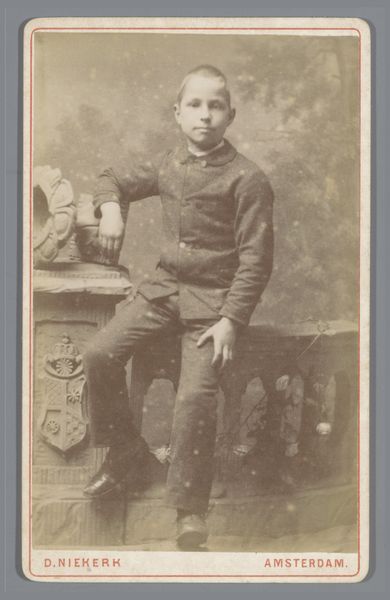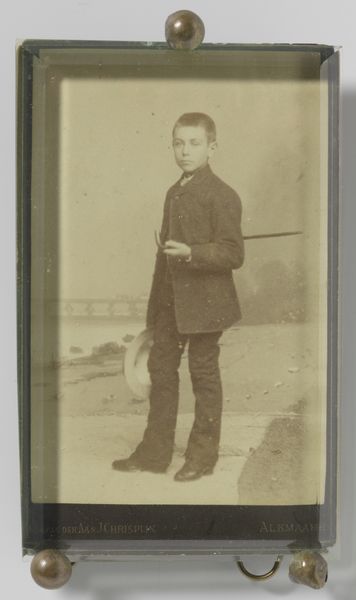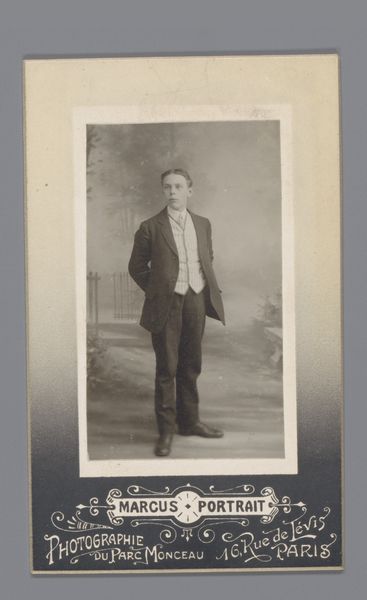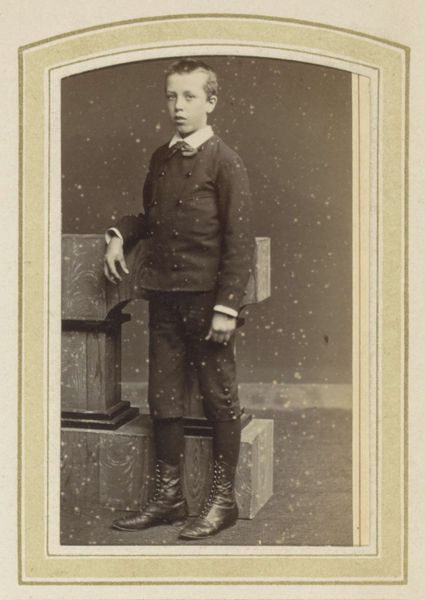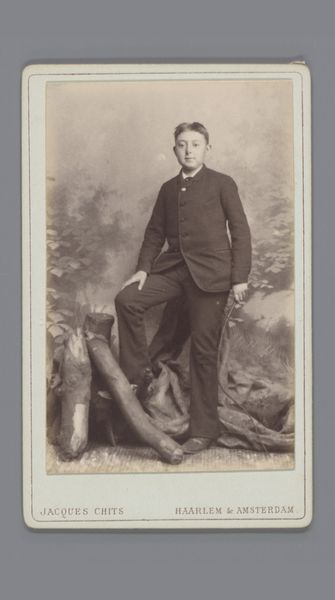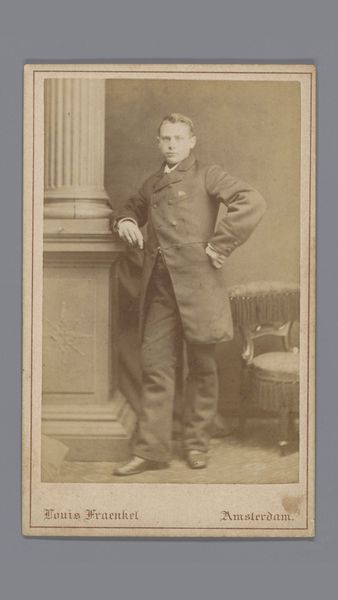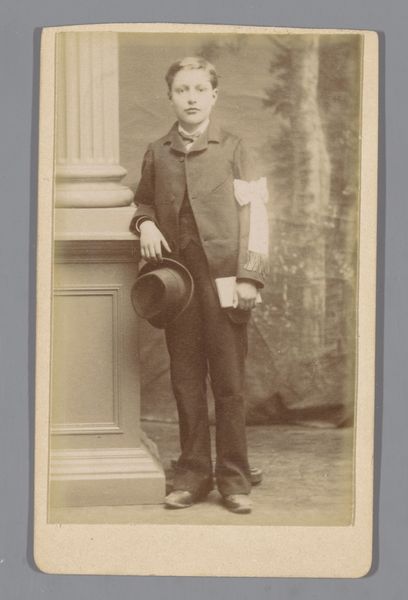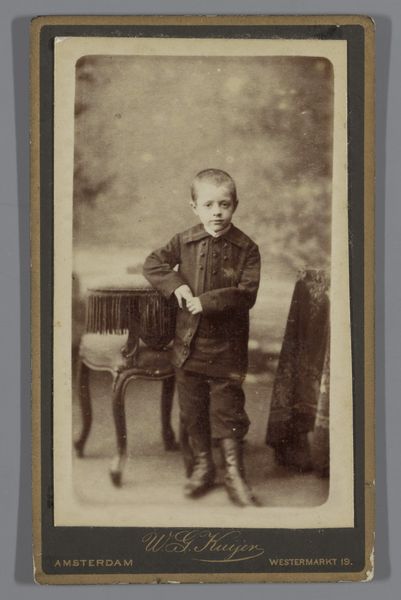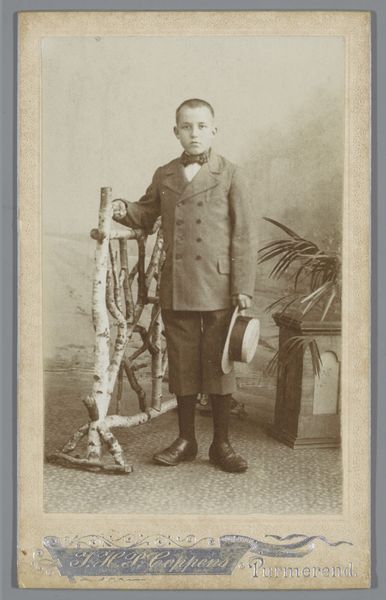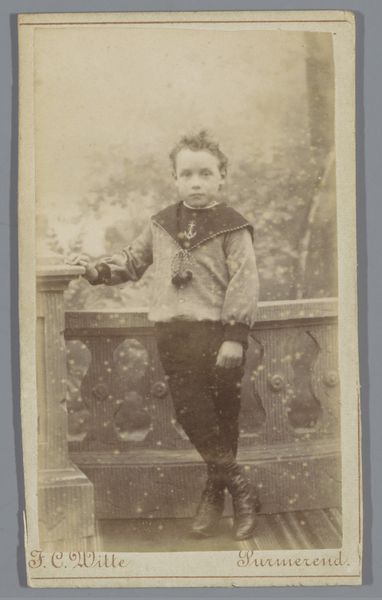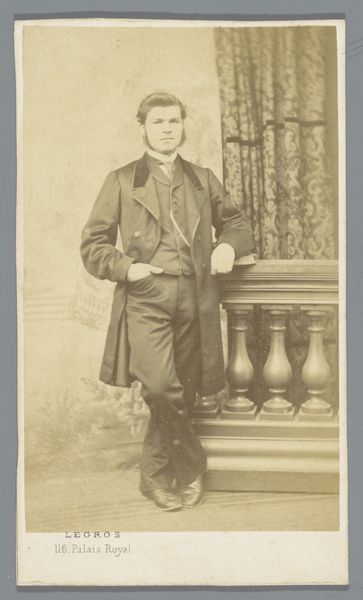
photography
#
portrait
#
self-portrait
#
pictorialism
#
photography
#
genre-painting
Dimensions: height 107 mm, width 65 mm
Copyright: Rijks Museum: Open Domain
Curator: The melancholy and somber hues immediately strike me in this turn-of-the-century photographic portrait, "Portret van een onbekende jongen", dated 1900-1914. It's the work of Gervais & Pacalet, photographers based in Lyon. Editor: There’s a poignant gravity in this young man's posture. The slightly desaturated sepia tones lend a unique vintage quality, while also conveying some weight. Curator: It’s remarkable how much a pose can say. He stands stiffly, hands in his pockets, not looking at all comfortable. The symbolism of formal dress—a suit too mature for him—points towards the weight of expectations, the forced performance of adulthood thrust upon children. Editor: Indeed. Formally speaking, there’s a strong verticality established by the full-length shot, accentuated by the long dark socks that extend to his knees. I'm also interested in the relationship of figure to ground here. How is the pictorialist backdrop influencing the character we're observing? Curator: Precisely, the pictorialist backdrop softens what would otherwise be a stark presentation, wrapping him in a hazy almost dreamlike world. The soft focus, almost painterly texture, speaks to an aspiration toward high art and its emotional potency. It imbues the everyday with myth. Editor: This is evident from the diffused light creating atmosphere; it certainly elevates the medium to art! Do you think this stylistic touch was intended to elevate the status of the sitter himself? Curator: Undoubtedly. These portraits provided more than mere likeness; they bestowed social prestige, embedding individuals within a cultural narrative, and perpetuating certain ideals. There is still this practice of shaping our own projected images and identities even in today’s society. Editor: Absolutely. Through the sepia tones and composition, this image has a way of speaking about loss, perhaps even reflecting a time and innocence irretrievably past. Curator: Ultimately, it's an affecting and culturally charged artwork, subtly echoing the larger psychological forces at play within individual lives. Editor: Indeed. It causes one to ponder at the intersection of representation and reality. What is actually known? It may lead the observer into many lines of questioning.
Comments
No comments
Be the first to comment and join the conversation on the ultimate creative platform.
